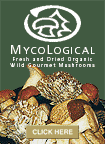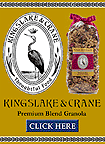By
Eric Gaudet, Paris Bureau Chief
Photos by Eric Gaudet & Chris Simpson
Barely
noticed on the maps and barely known at all, this is a splendid
destination for vacation and tourism. In the Indian Ocean,
East of Madagascar, is Mauritius Island, one of the Mascarene
archipelago islands.
It has a volcanic
origin and was discovered around 1511 by a Portuguese sailor.
Between 1598 and 1710 it was a possession of the Dutch, who
named it after their prince, Maurice of Nassau. During their
stay, they ruined the country, destroyed the forests, brought
in slaves from Madagascar and deer. When they quit, they left
behind a few slaves and a crop which was to become the core
of the island’s economy, the sugar cane. The French
then came in 1715 and ran it with the West Indies Company,
under Mahé de La Bourdonnais. They imported new slaves
from Africa and Madagascar, and really started to develop
the island by building the new Port Louis harbor and public
infrastructures, developing the sugar cane culture and industry.
It was then a prosperous colony.
By the treaty of Paris in 1814, the island became a British
property. It was allowed to keep its former traditions, rules,
laws, customs, religions and culture. It was the only British
territory to be run by the Napoleon Civil Code. Some people
even said that it was indeed a French colony run by Englishmen.
Slavery was abolished in 1835, and as a consequence, 450,000
laborers were imported from India, over 30 years to work in
the cane fields.
|
Click
on images to enlarge. |
Mauritius
became independent in 1968 and was still a member of the Commonwealth.
It became a republic in 1992. Tourism was then developed and
it is now the other leg of the economy.
Along the centuries a true melting pot developed and grew
there, mixing the original slaves from Africa and Madagascar,
the colons from France and England who stayed there, and the
workers imported from India and from China. Their descendants
now all live together in their communities, in a harmony where
everybody is kind and gentle, especially with foreigners whom
they are always ready to welcome and to help with a smile.
Most of them speak both English and French.
This history has had many implications to today’s way
of life in Mauritius. The culture offers a lively encycolopedia
of religions: Christians, Muslims, Buddhists, Hindus, ...
During the times when the colony has been prosperous, the
main distractions of the high society in Mauritius were luxury
receptions and gourmet food. There is now a complete mixture
of spices, tastes, colors, influences, recipes and sensations
from all over the world: Europe and France, India, China,
Africa. Like me, you’ve heard about world food or fusion
food and tried it. But in Mauritius, this is a reality and
such multi-cultural influences seem so natural!
Aside from regular vacationing with sightseeing, water sports
and leisure, Mauritius is a place to have a true gourmet food
experience. You will find there that many chefs have had an
international experience, which they naturally add to the
local cosmopolitan culture.
The products used in the Mauritian gastronomy are both local
and imported. The meats usually come from Australia, the venison
is local, and the fish and seafood are usually caught locally,
but may also come from the Seychelles islands.
While visiting, don’t hesitate to visit the whole island,
which is not very big: 40 miles long by 30 wide. You’ll
want to enjoy the coastal road, with its superb views on the
shoreline. Don’t miss the inside of the island with
its scenic drives and gorgeous views over the panorama. Don’t
forget to visit Port Louis with its typical market and its
new Waterfront, the Pamplemousse botanical garden, Curepipe
with its colonial houses, and where shopping is usually cheaper
than in Port Louis, Chamarel and its colored volcanic ashes
lands.
As I did, you will find that Mauritius has many gastronomy
and hotel resources. Here are some of them, which I tried
and can recommend. Besides the gastronomy restaurants, which
can be compared to some of the best gourmet restaurants we
can think of, you can also try the smaller ones, where you
will enjoy the true traditional local food, and where the
Mauritians are used to going to.




















